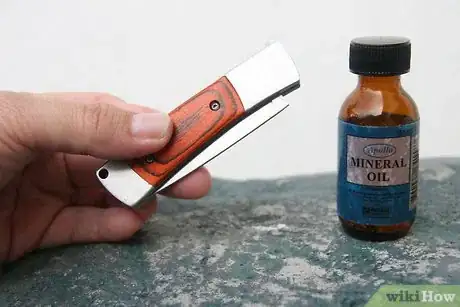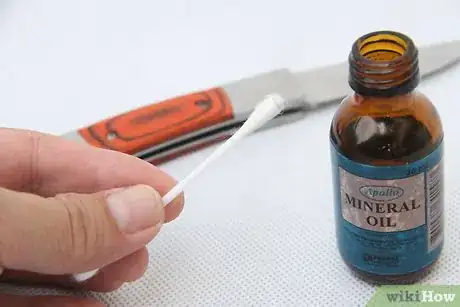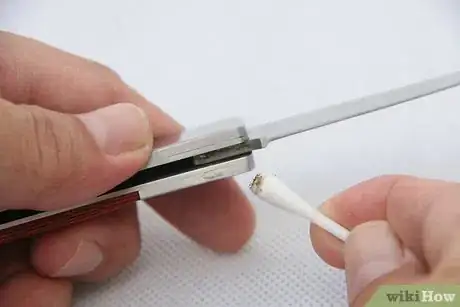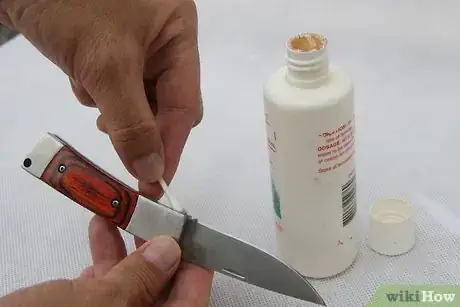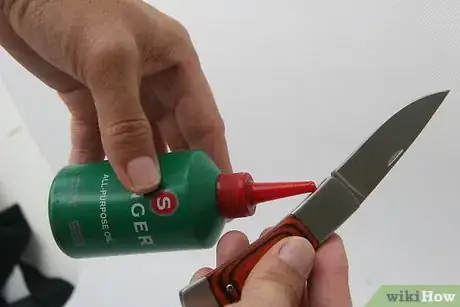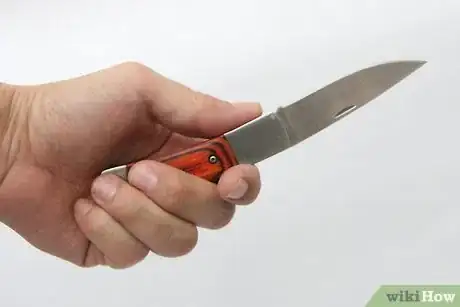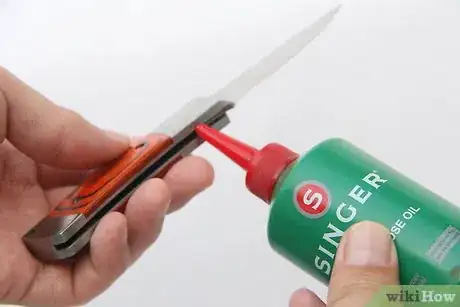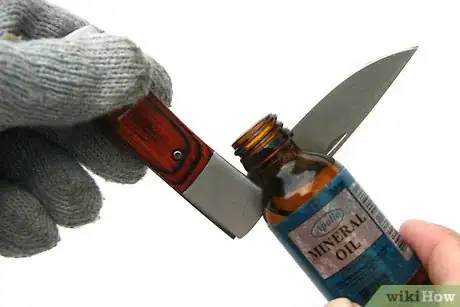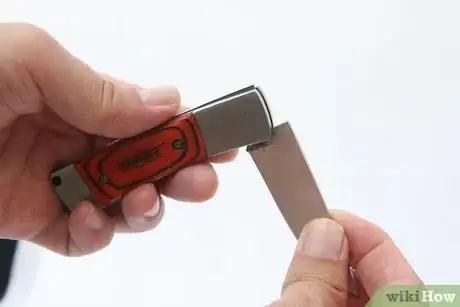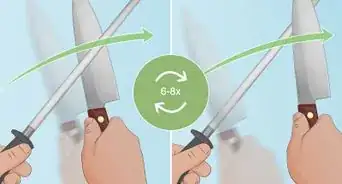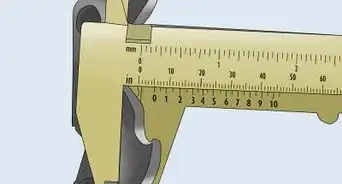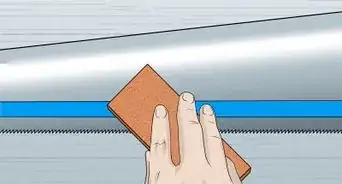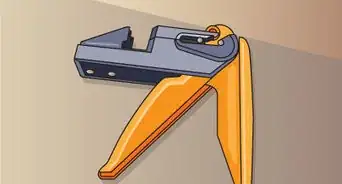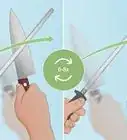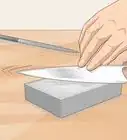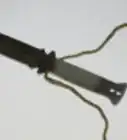X
wikiHow is a “wiki,” similar to Wikipedia, which means that many of our articles are co-written by multiple authors. To create this article, volunteer authors worked to edit and improve it over time.
This article has been viewed 96,253 times.
Learn more...
Are you breaking your fingernails and cursing each time you attempt to open your knife? Well, it's time to fix that stiff knife, keep your fingernails intact and ensure that those around you hear nothing but silence.
Method 1
Method 1 of 4:
Rust/age
-
1Check to see what color the blade or hinges are. Does the blade or hinge look slightly orange? Or even slightly powdery or white? This could be caused by the metal in the knife oxidizing to the point of the blades adhering to the casing or each other.
-
2If the knife has only metal parts, simply give it a good soaking in a mineral oil. Then, buff it clean in a day or two. Once you've done this, keep the knife oiled from then on.[1]
-
3If the knife has non-metal parts, your job will be trickier. In this case, the metal parts need a good soak without getting the rust removal fluid on the non-metal parts. You can do this by masking the area off with tape, by using tiny brushes or "Q-tips", etc.
-
4Repeat several times over the course of a week, buffing the rust and working the oil into the hinge(s). Use a heavy towel or wear gloves to protect your fingers from the blade(s) during this process.
Advertisement
Method 2
Method 2 of 4:
Goop
-
1Observe whether the knife has some substance on the blades. Is it sticky? Did the knife fall into something that is just not wiping off easily?
-
2Clean the "goop" off. How successful this will be depends on the type of "goop" it is. If you have no idea, it is best to start with the mildest cleaner available and progress to the strongest. Try cleaning agents in this order (rinsing and drying thoroughly in between): Water, ammonia, light mineral oil, "tape remover" or "goop remover" products from the store.[2]
-
3Thoroughly oil the knife when you're finished cleaning. This will prevent future oxidation.[3]
Advertisement
Method 3
Method 3 of 4:
Friction
-
1Clean the knife thoroughly using the methods outlined above. Sometimes a knife "sticks" because its blades were too snugly squeezed at the factory when the hinge(s) were pressed or riveted in. Loosen it as follows.
-
2Oil the knife hinges thoroughly.[4]
-
3Protect your hands with either heavy gloves or a heavy towel.
-
4Place a drop or two of mineral oil in the hinge area.[5]
-
5Open and shut the blade repeatedly to create enough wear in the hinge to loosen it.
Advertisement
Method 4
Method 4 of 4:
Loosening the hinges
-
1Inspect the knife for a screw at the base of the blade. It may be under the clip. Depending on the knife, you may need to remove the clip to access the screw.
-
2Use a small screwdriver to loosen the screw holding the blade in place. Be sure to not loosen the screw too much as the blade could potentially fall out.
-
3Replace the clip if needed. Check that the blade moves smoothly.
Advertisement
Community Q&A
-
QuestionI have a tactical force joker knife and it is painfully hard to open with my index finger . I don't have problems like this with other knives. How can I make it easier to open?
 Princess XStaSyCommunity AnswerWhat I did was wrap a piece of a plastic envelop around the blade. The plastic is easier to grip than metal. just leave it a little longer then the top of the blade.
Princess XStaSyCommunity AnswerWhat I did was wrap a piece of a plastic envelop around the blade. The plastic is easier to grip than metal. just leave it a little longer then the top of the blade.
Advertisement
References
- ↑ https://boyslife.org/outdoors/ask-the-gear-guy/34582/how-to-clean-a-dirty-pocketknife/
- ↑ https://www.outdoorgearlab.com/expert-advice/how-to-clean-a-pocket-knife
- ↑ https://www.seriouseats.com/2018/09/mineral-oil-is-good-for-cutting-boards-and-knives.html
- ↑ https://www.artofmanliness.com/articles/how-to-restore-a-vintageantique-pocket-knife/
- ↑ https://www.artofmanliness.com/articles/how-to-restore-a-vintageantique-pocket-knife/
About This Article
Advertisement


